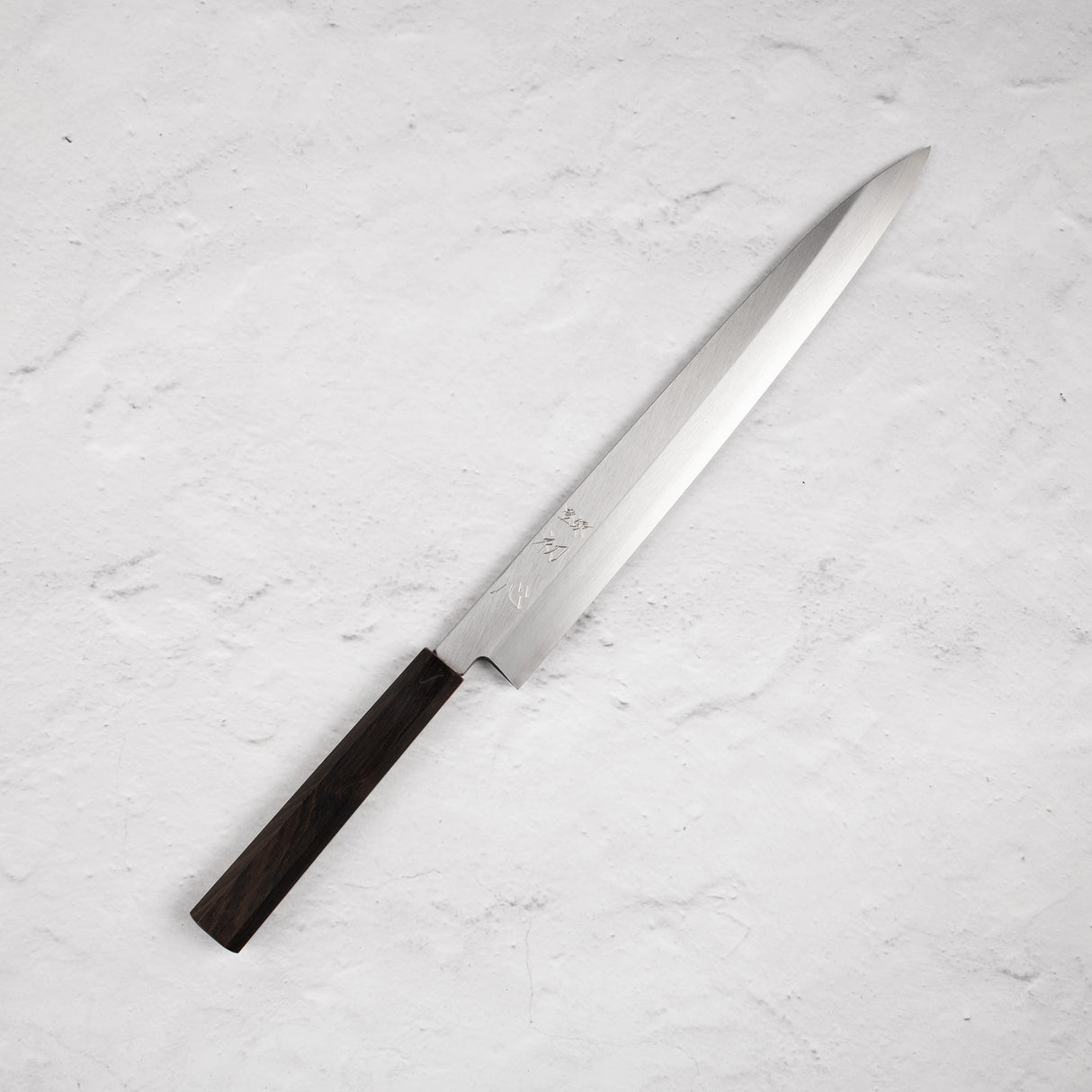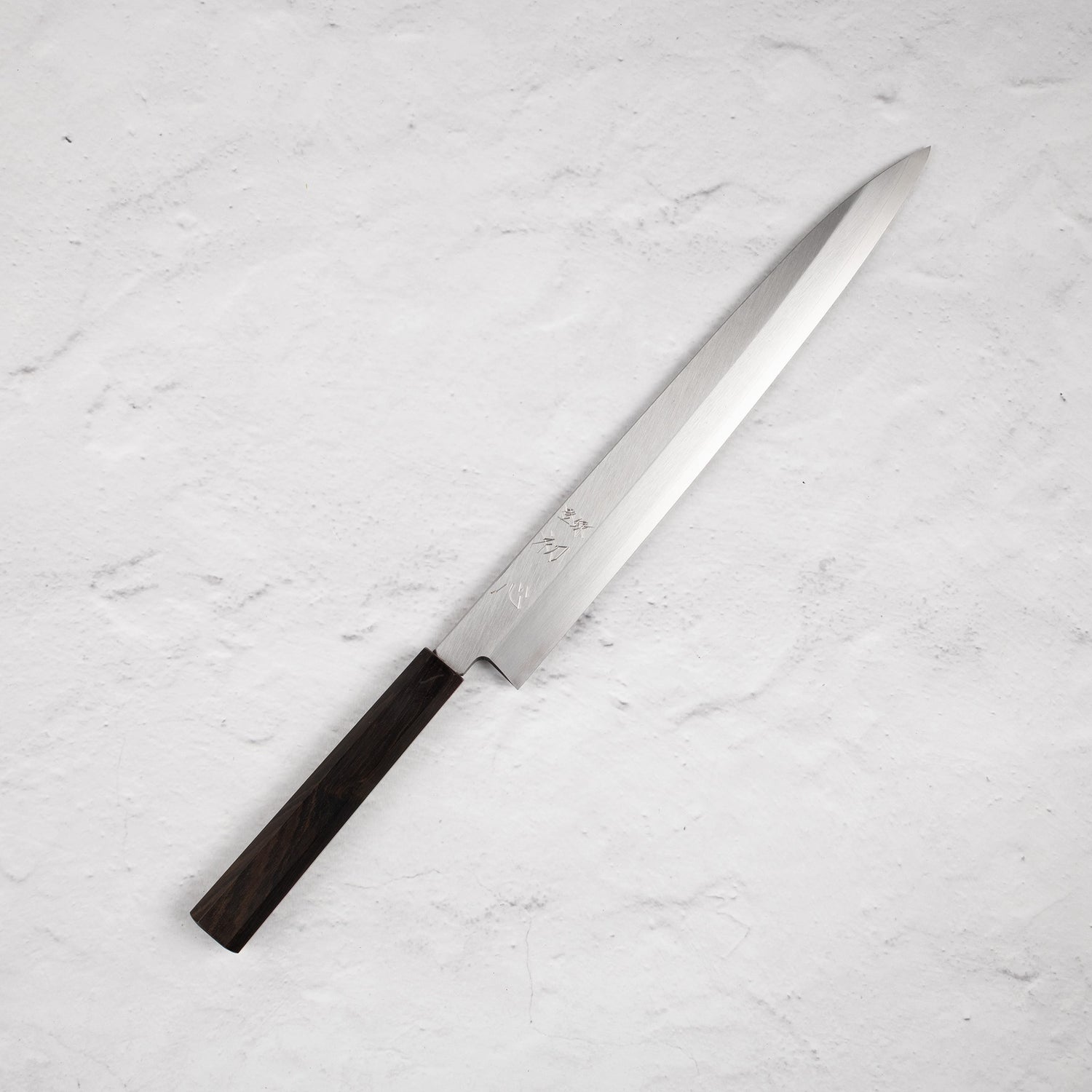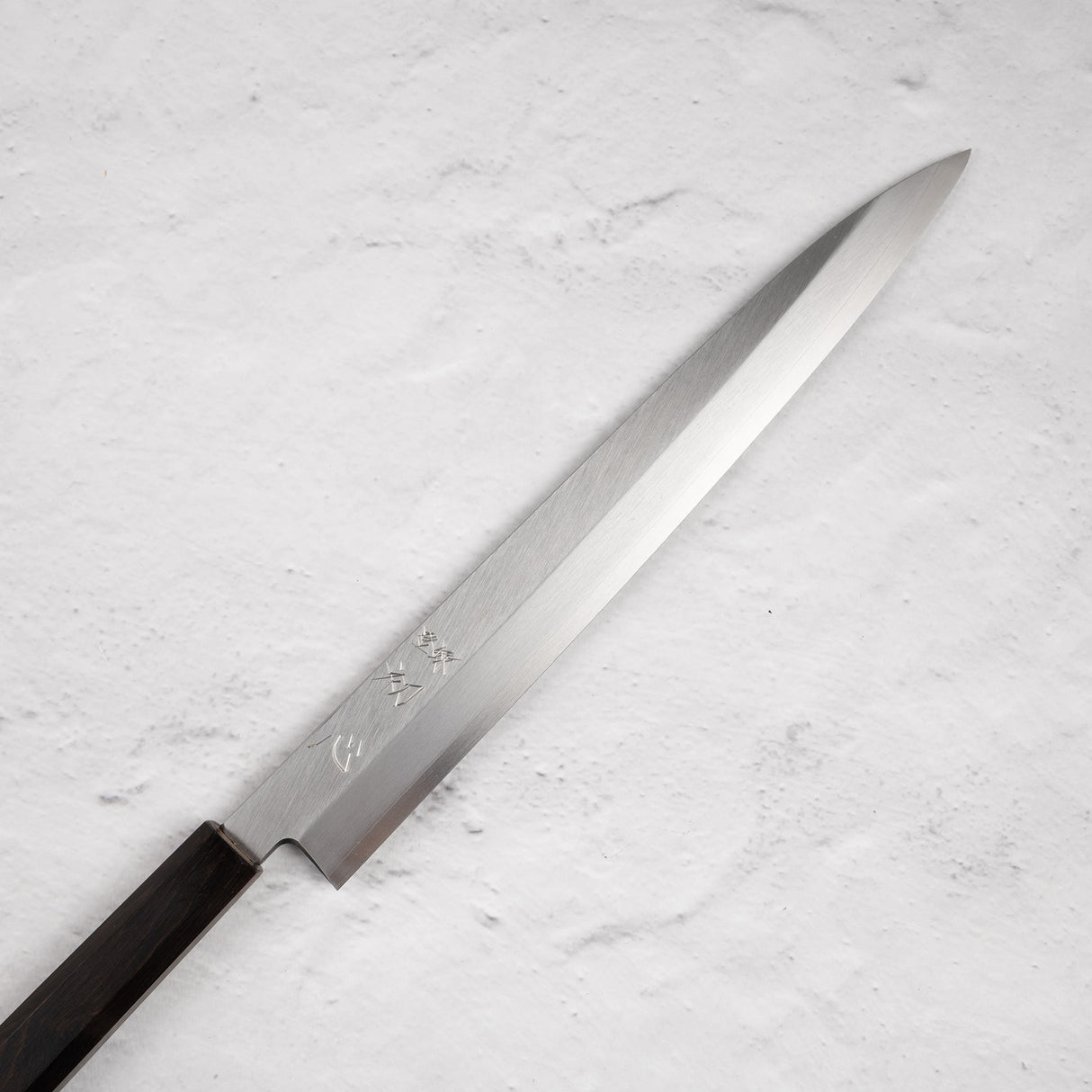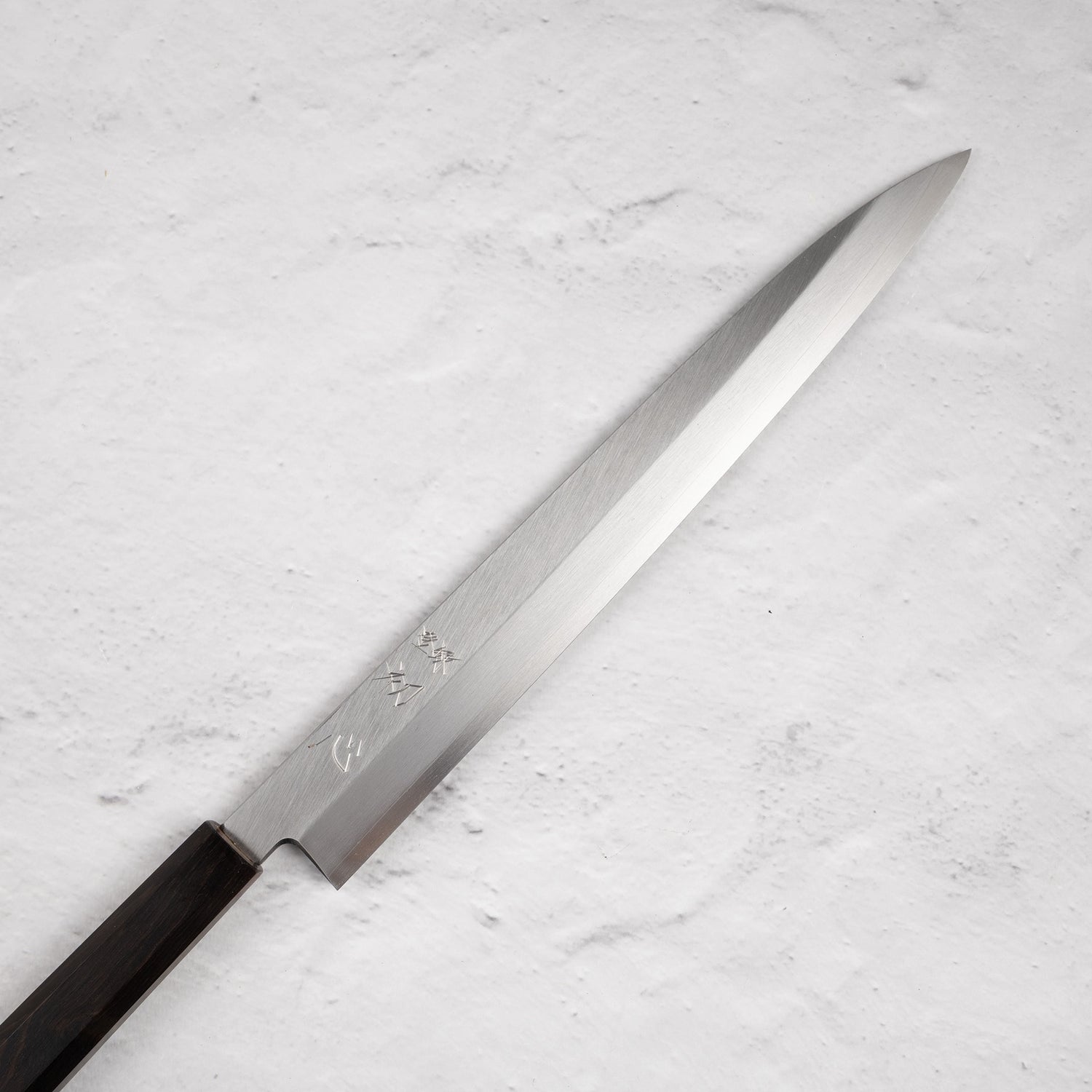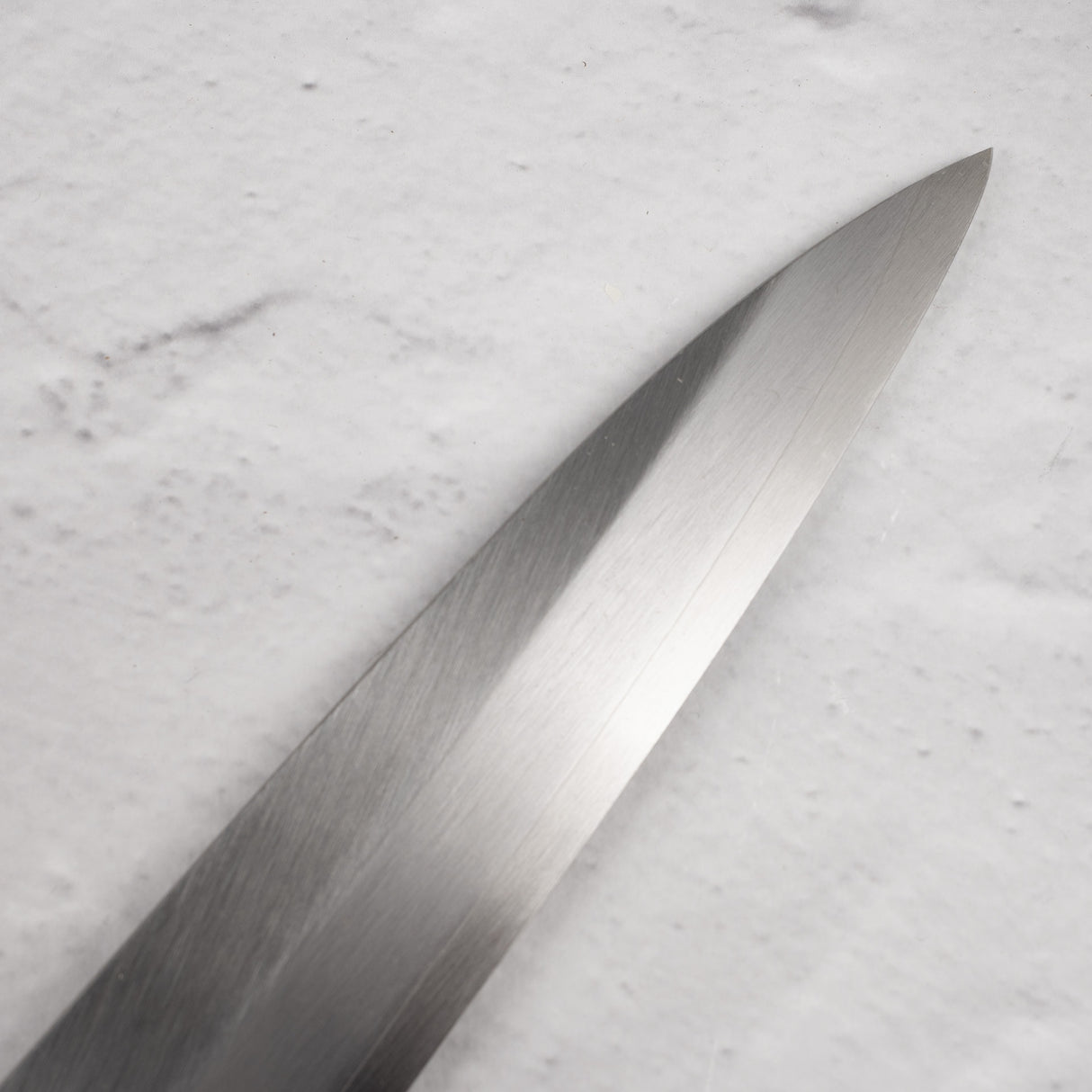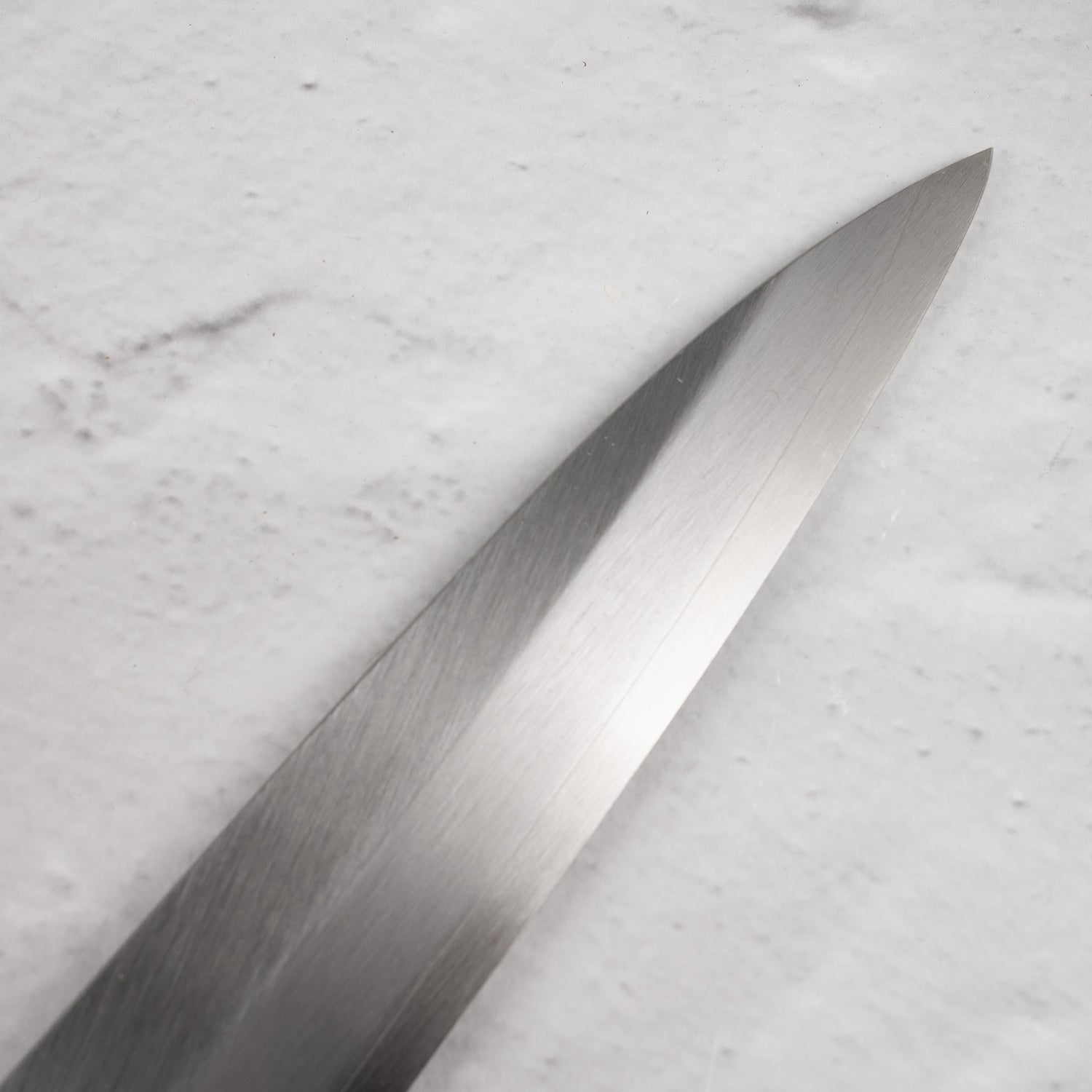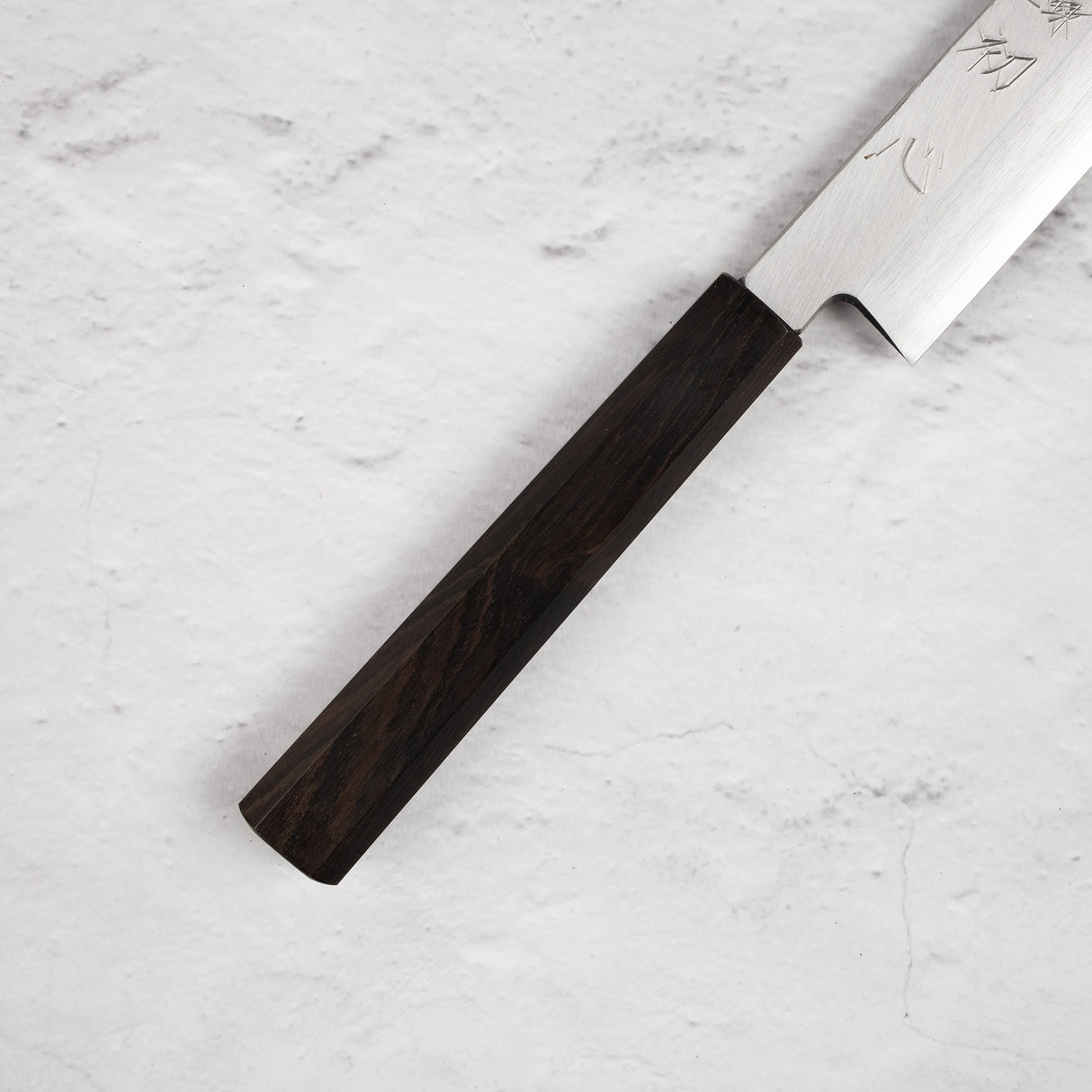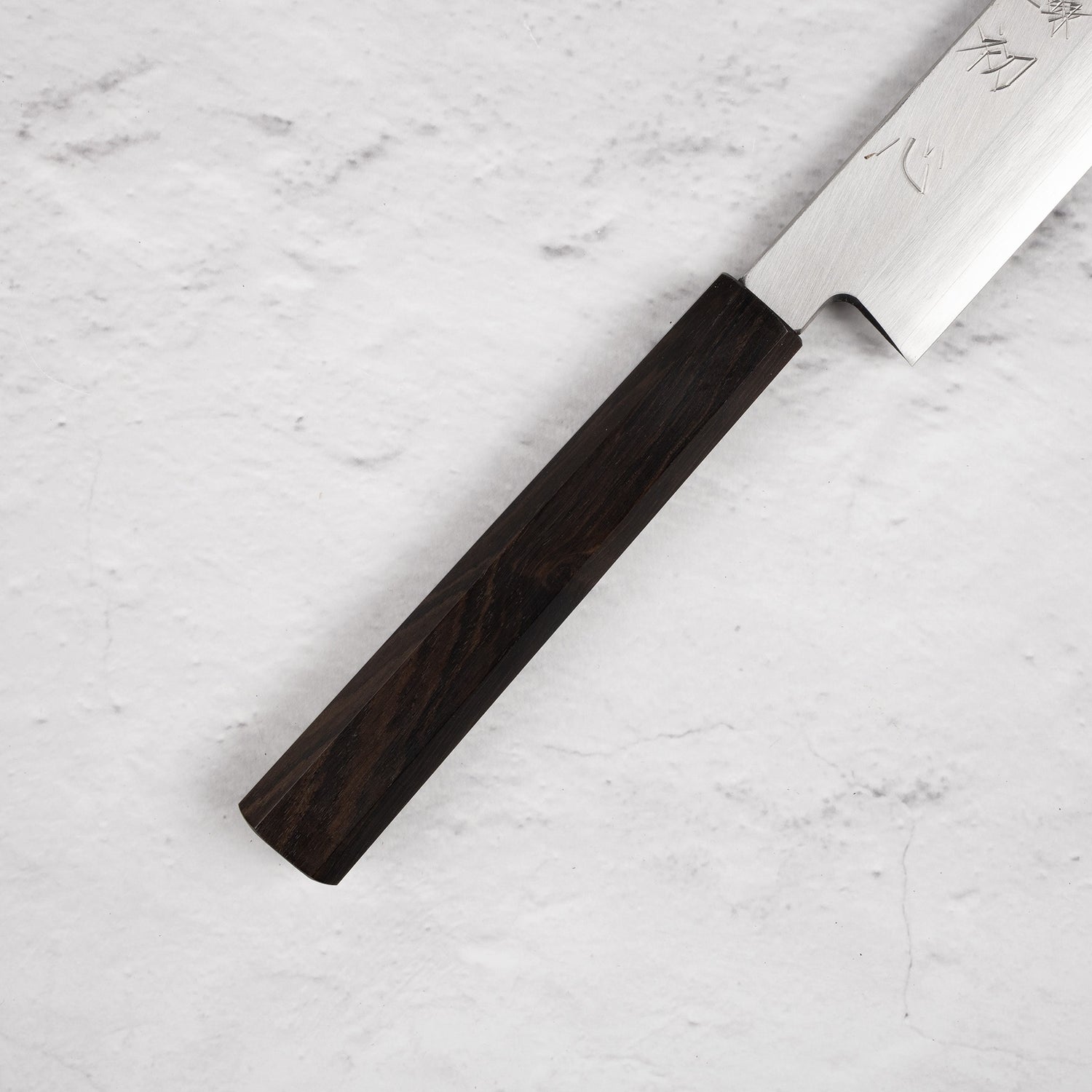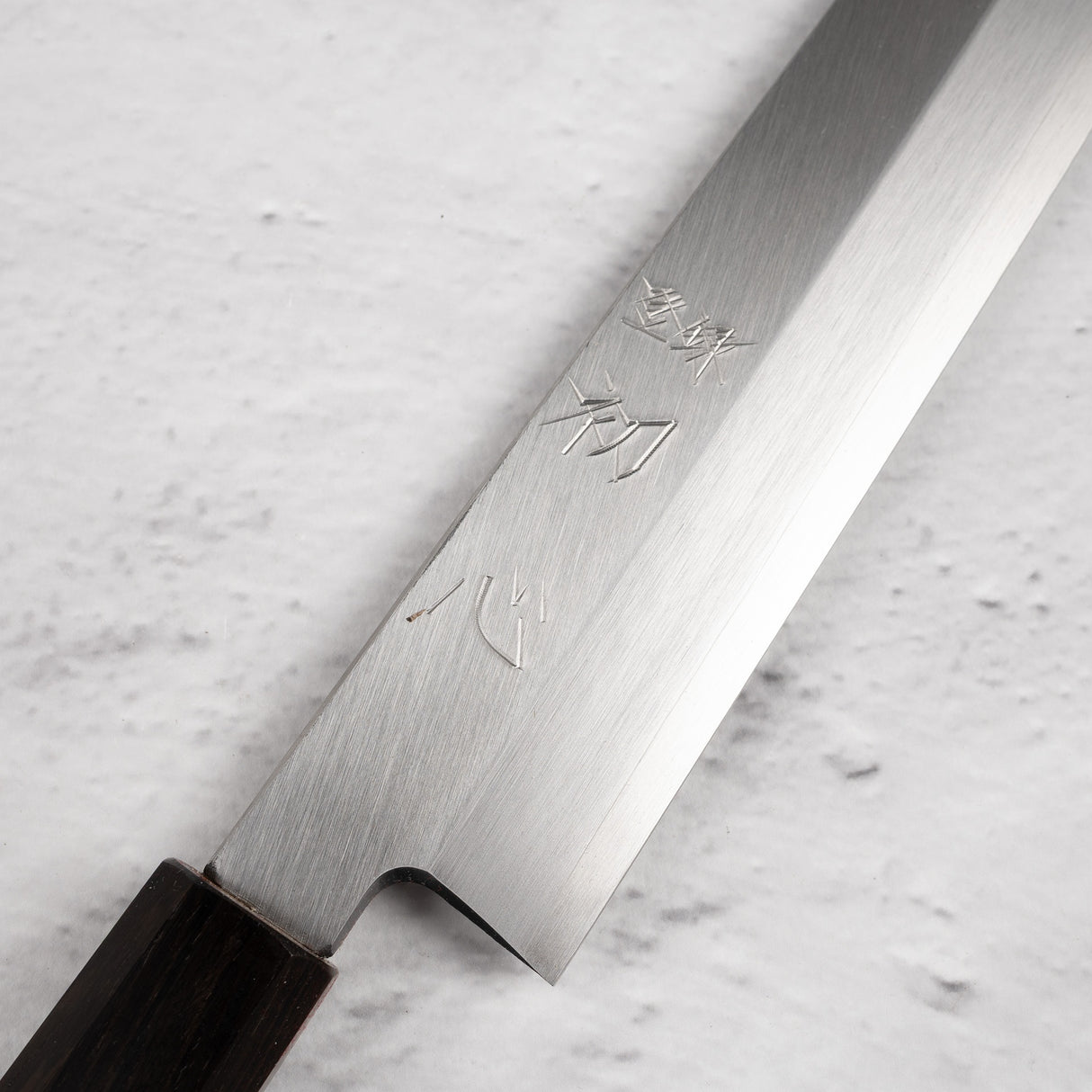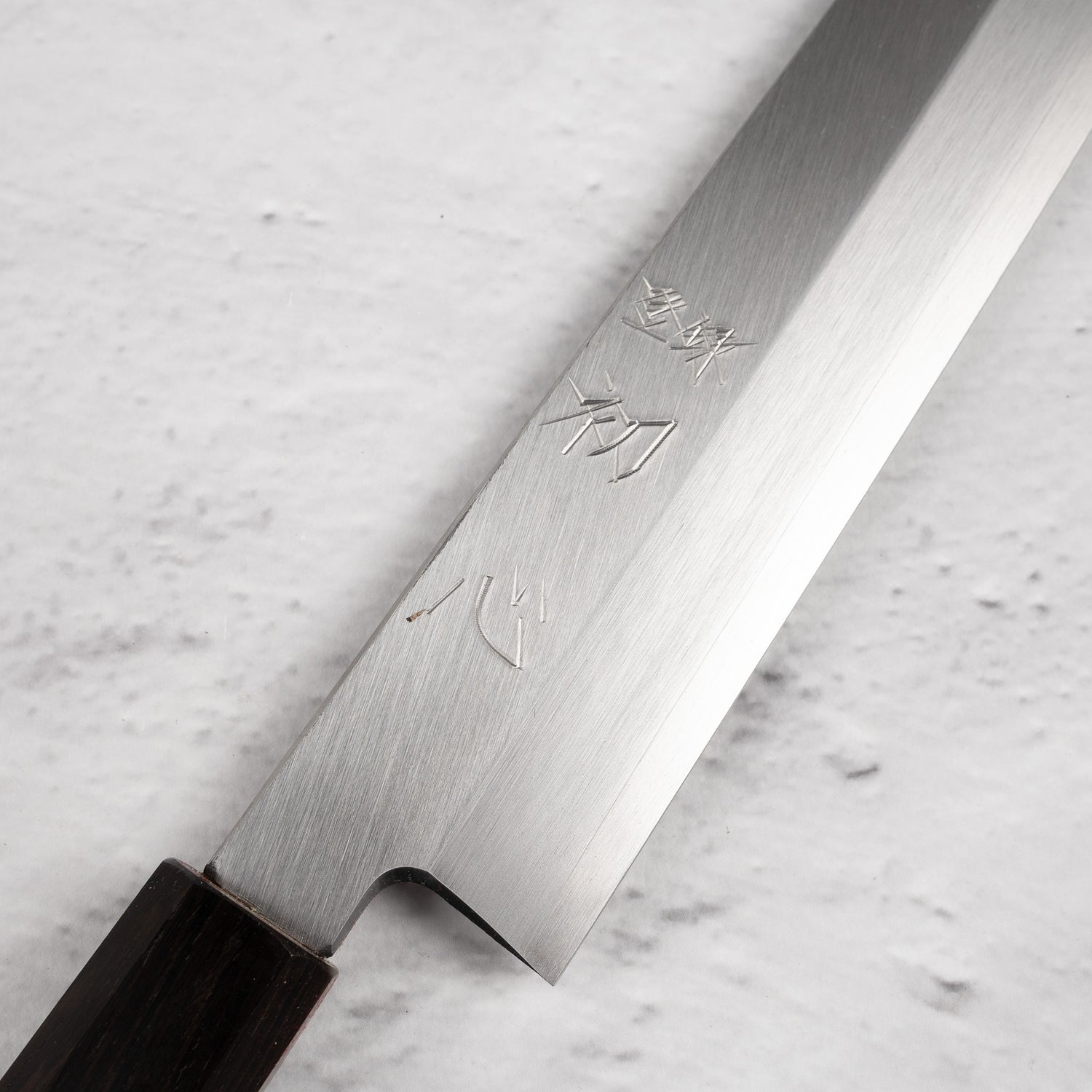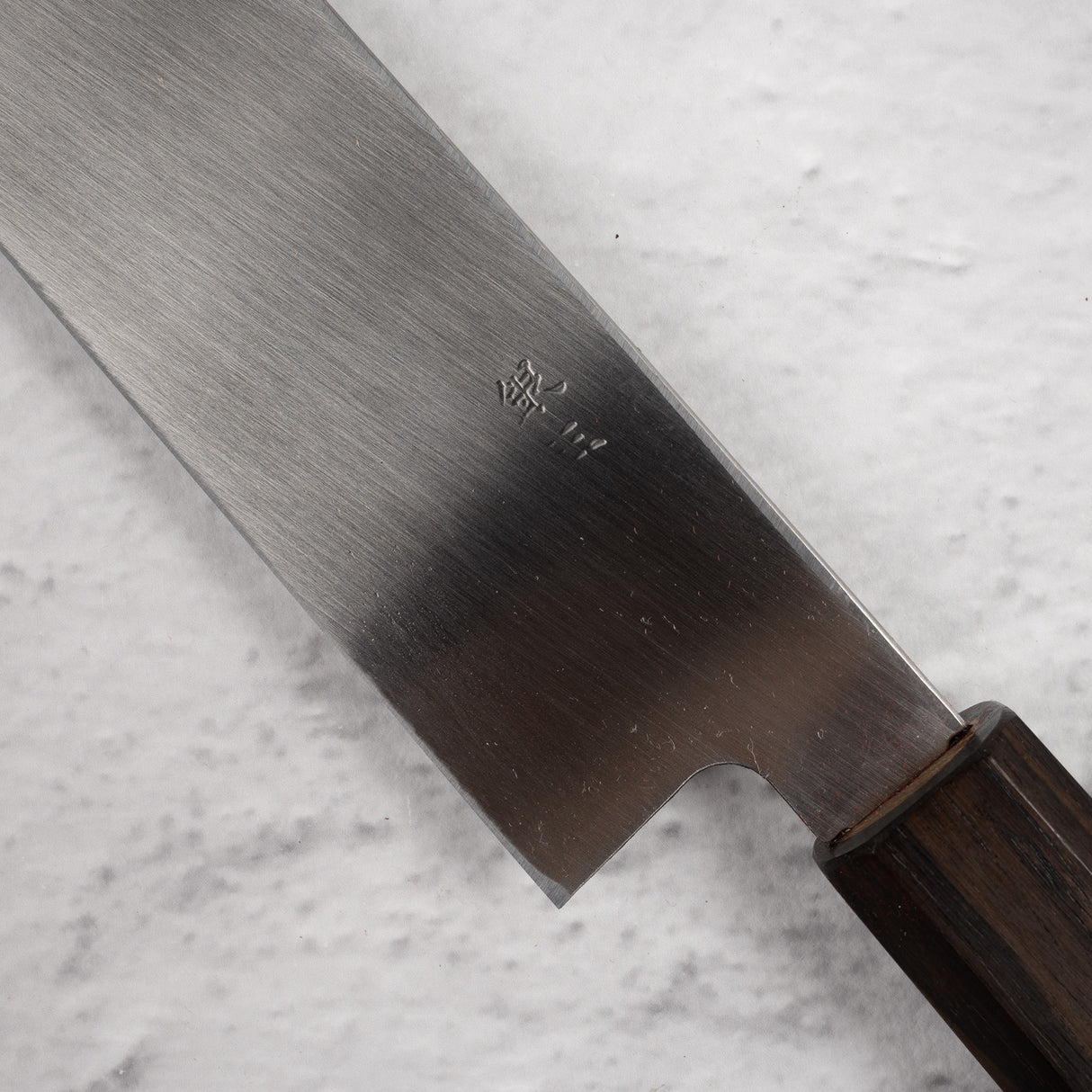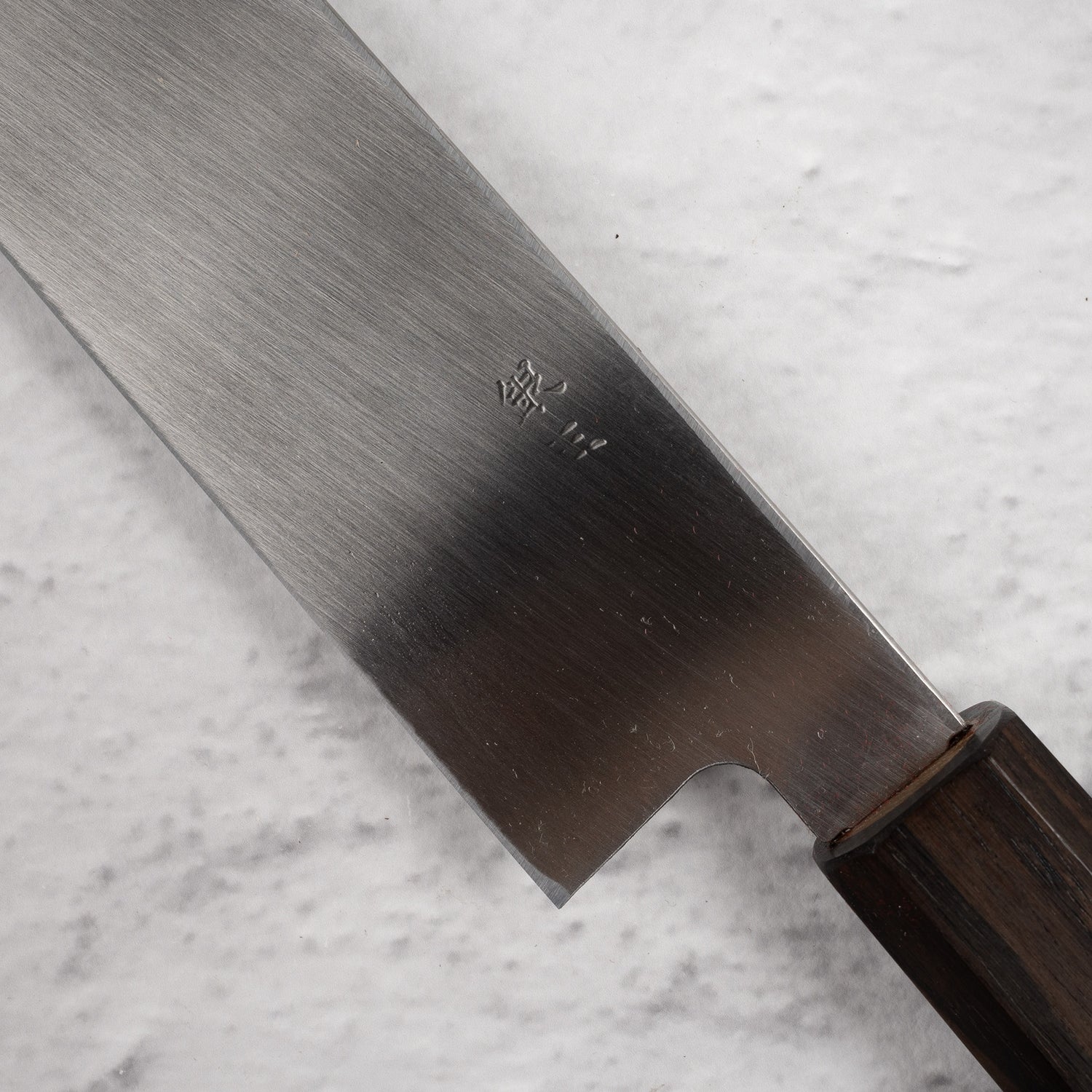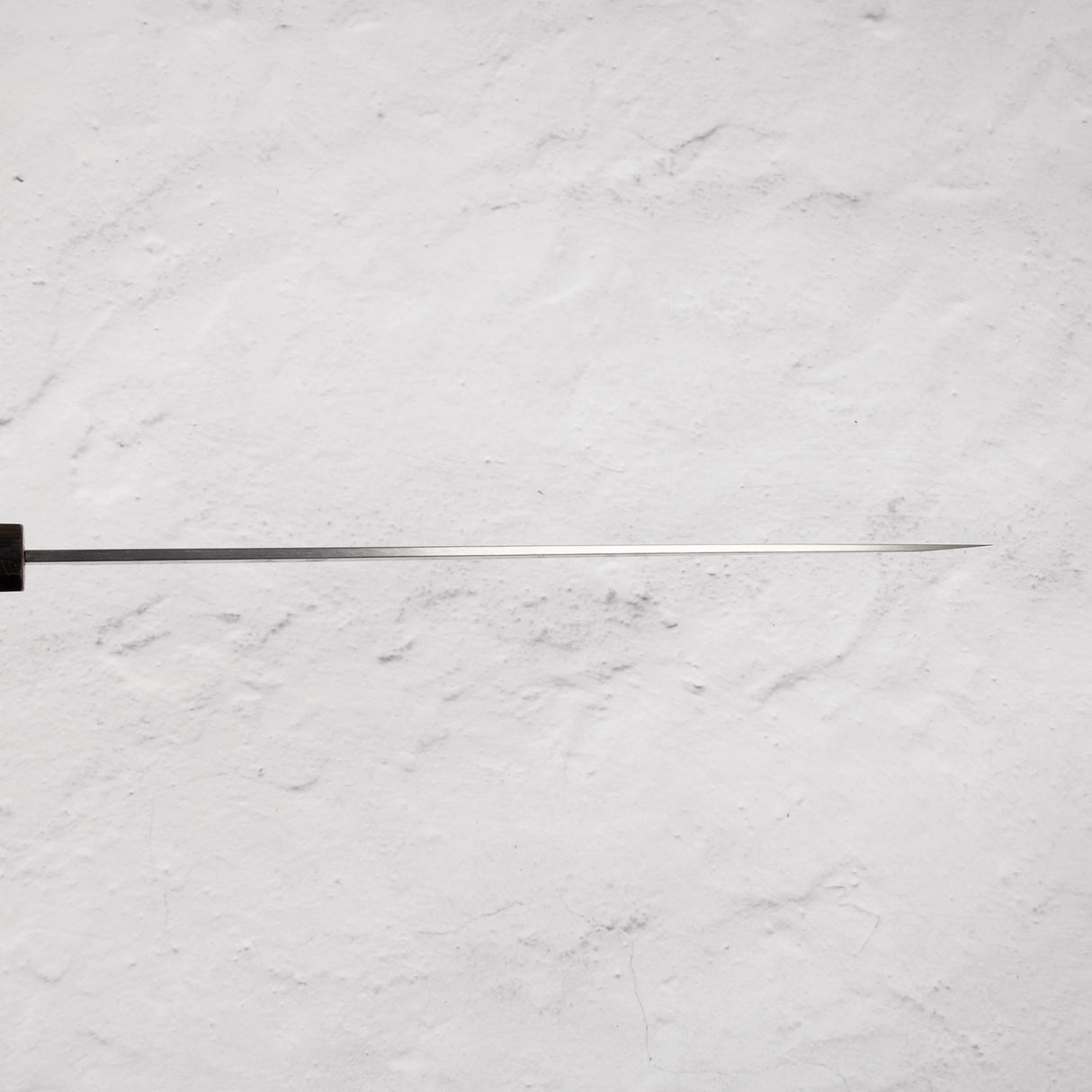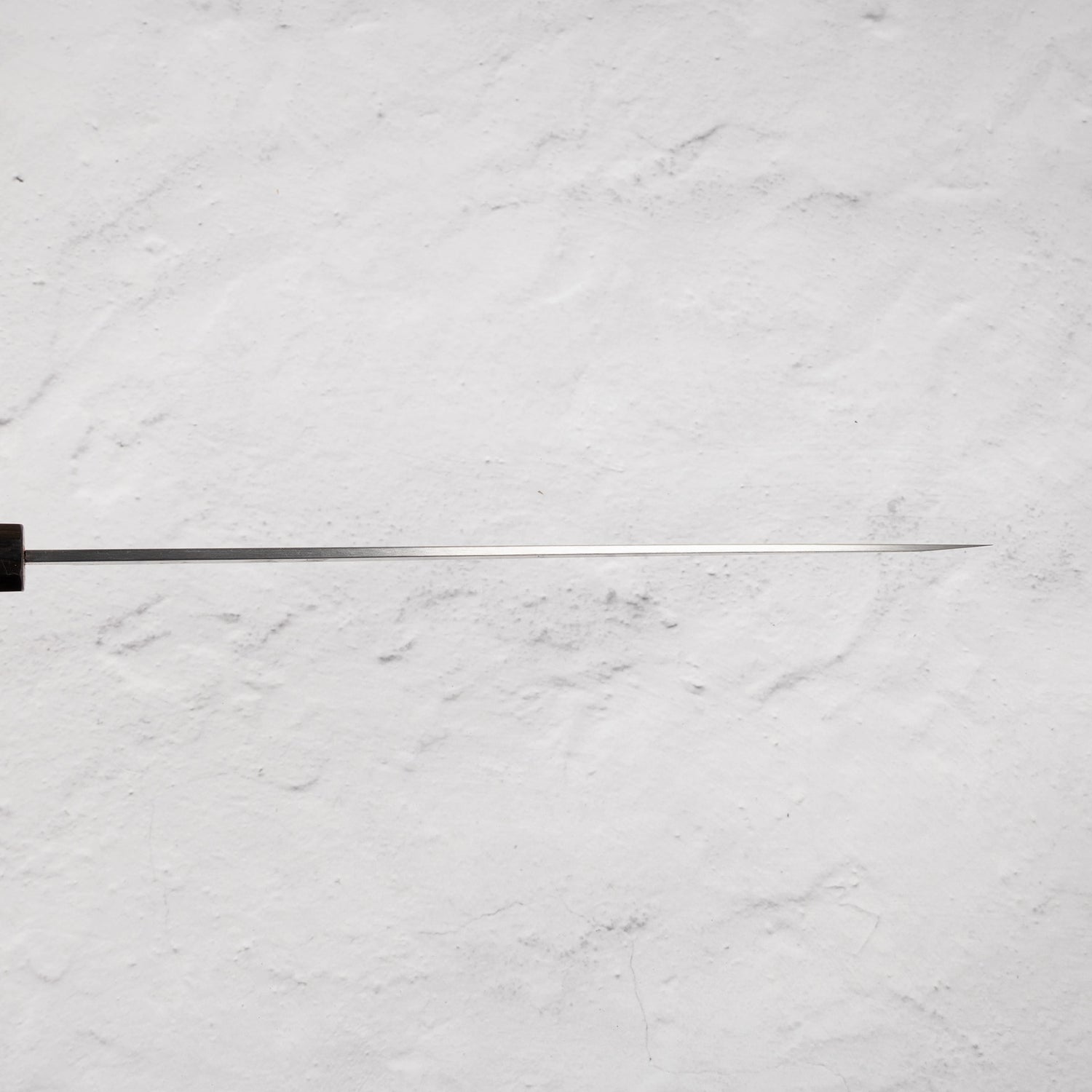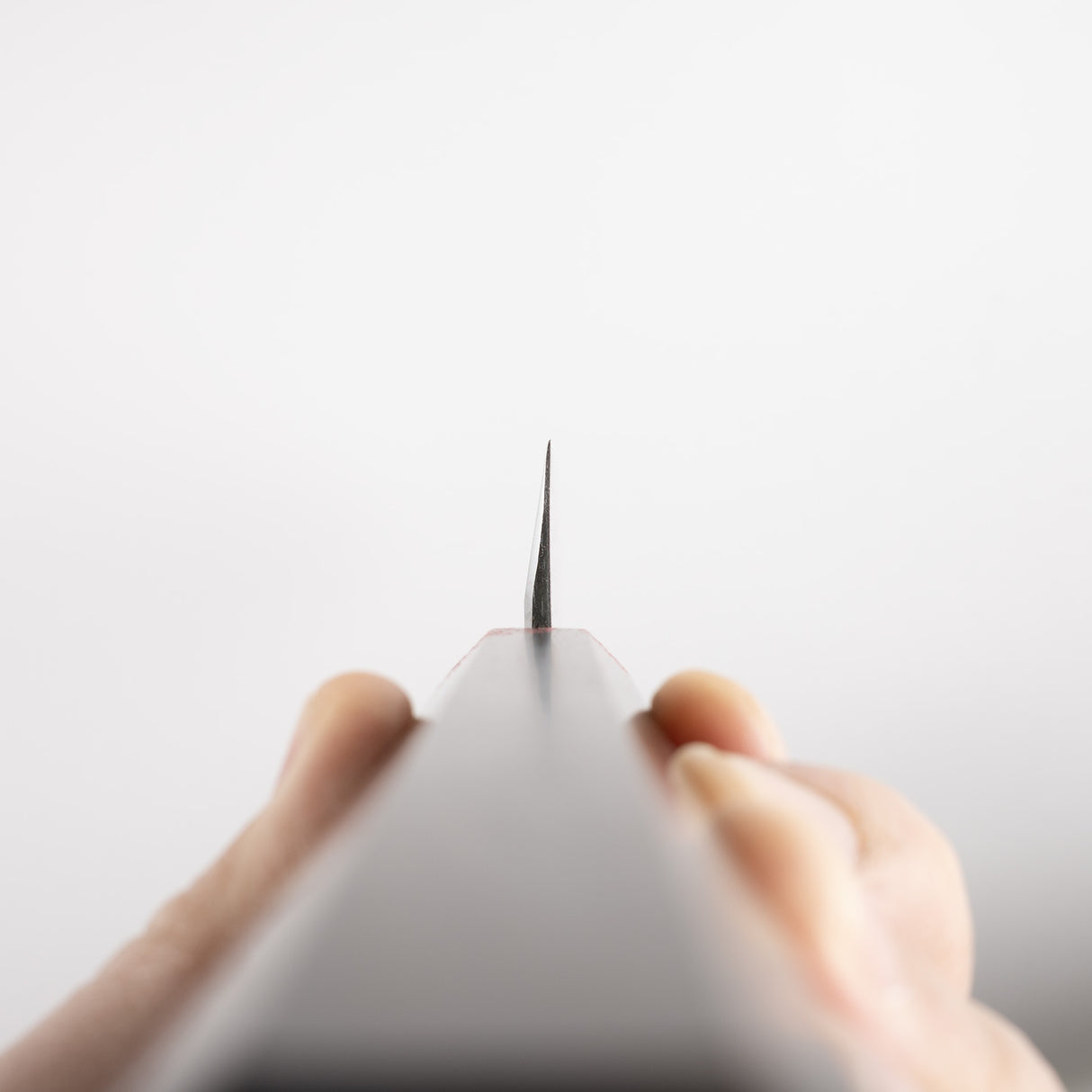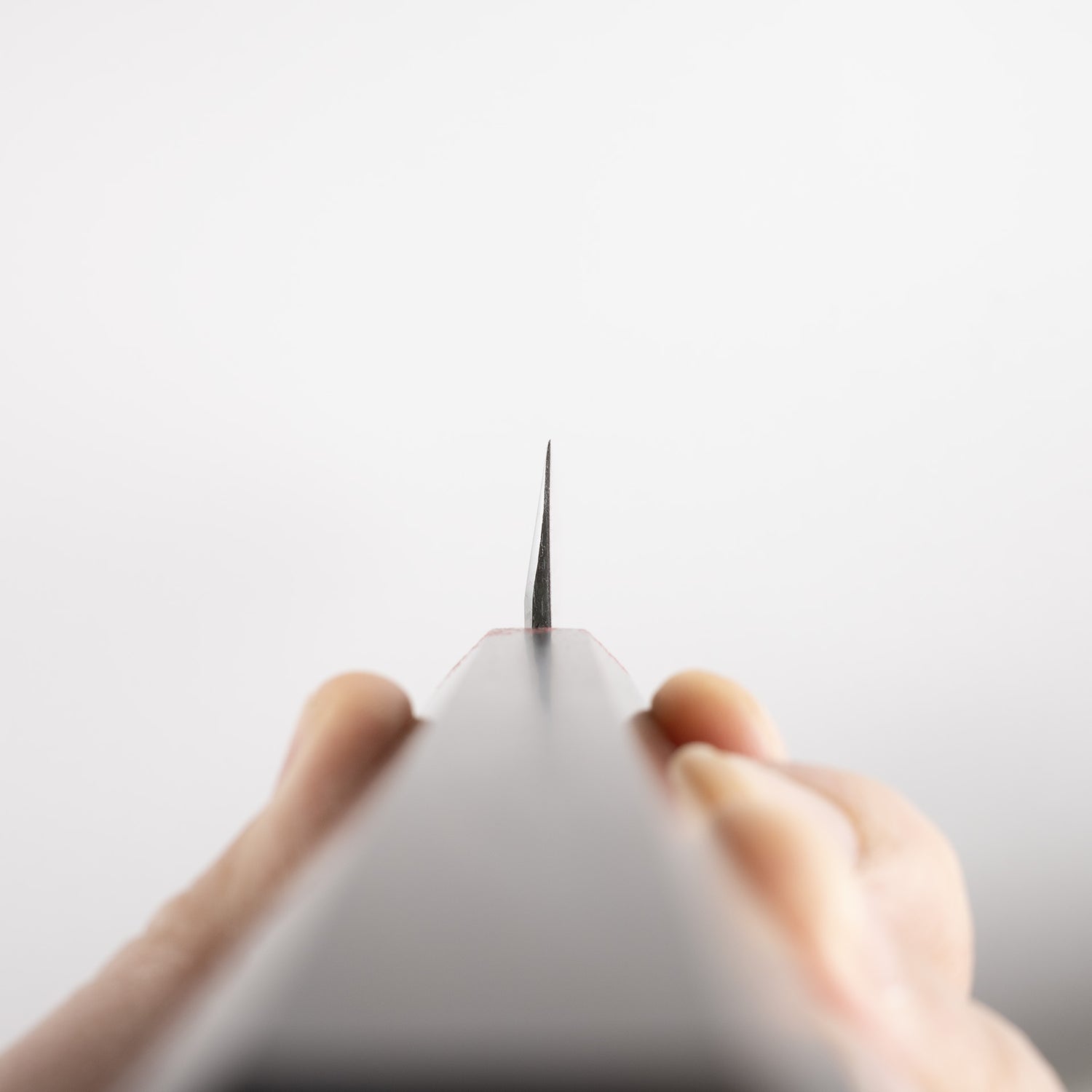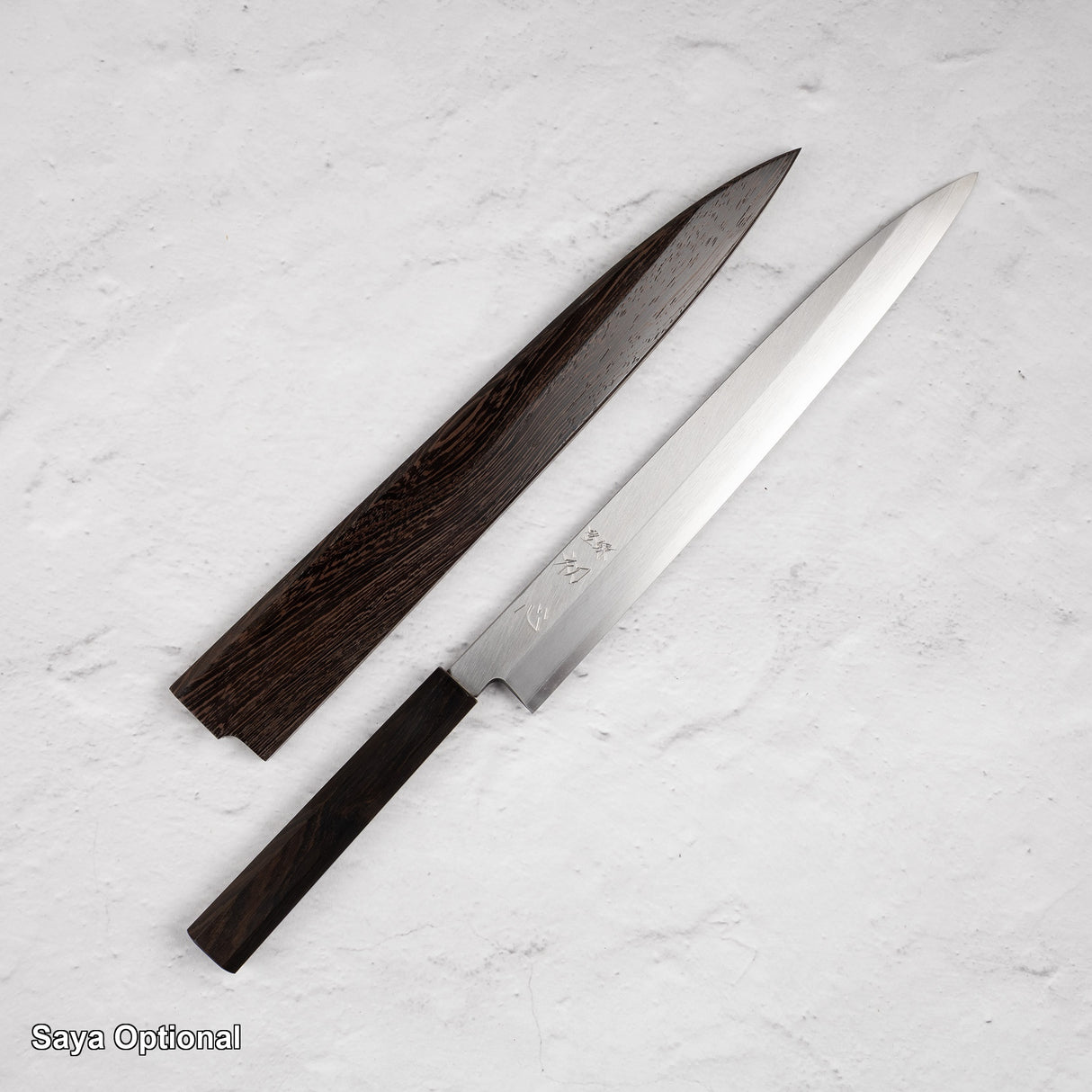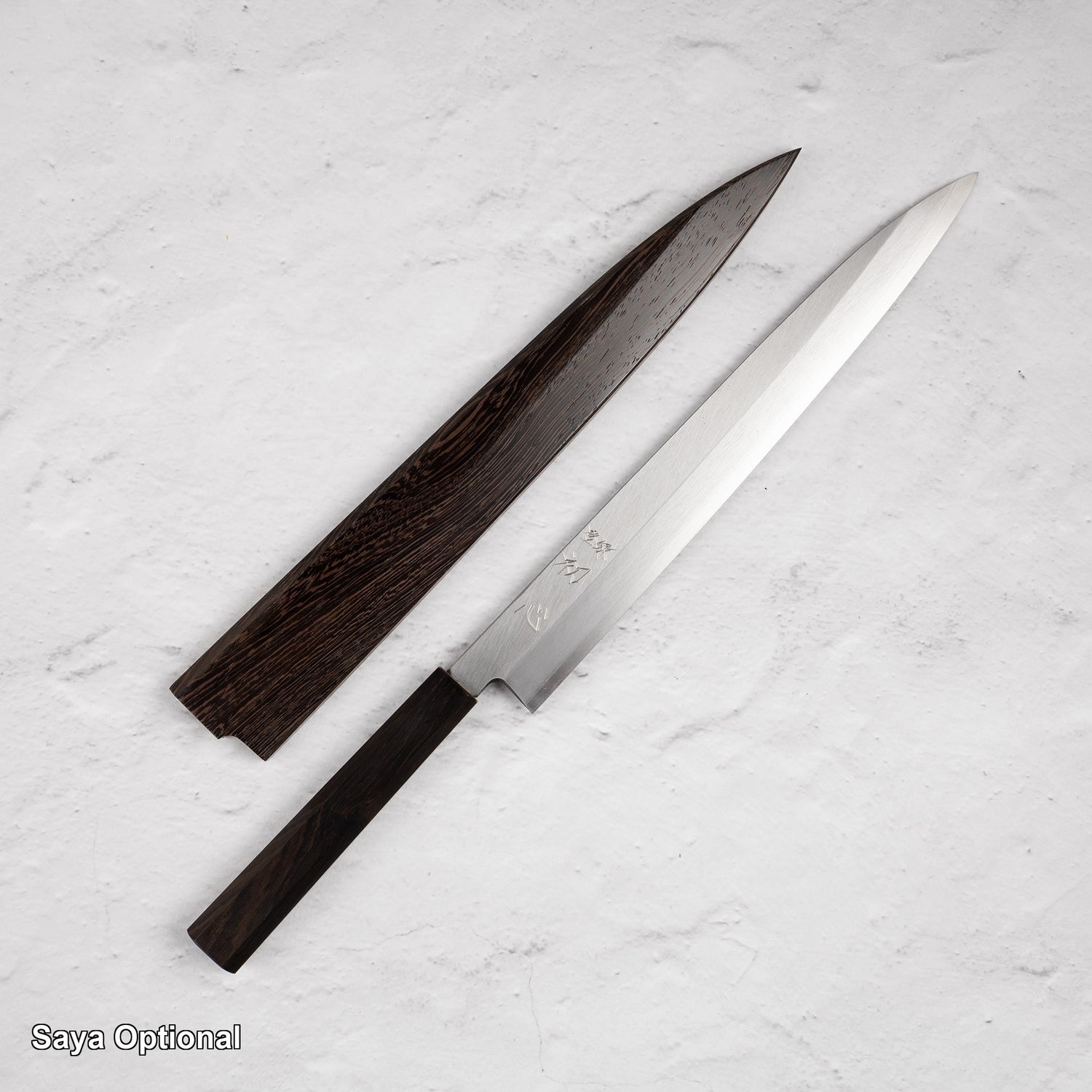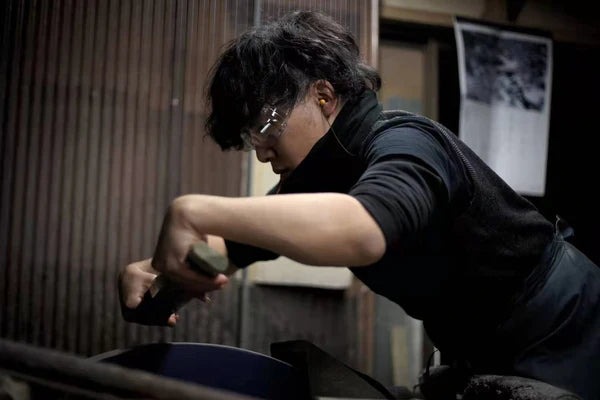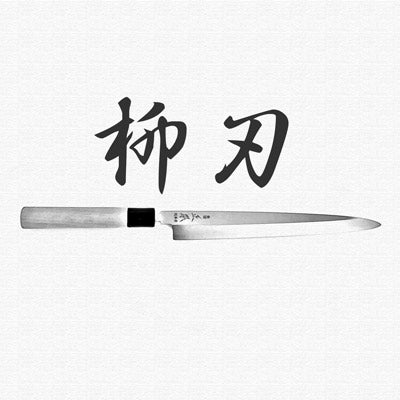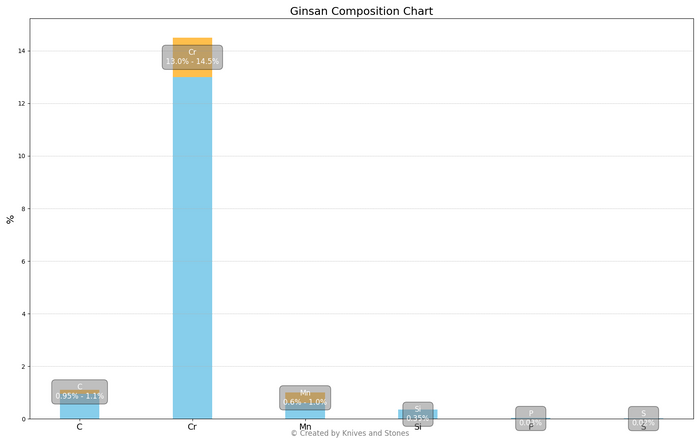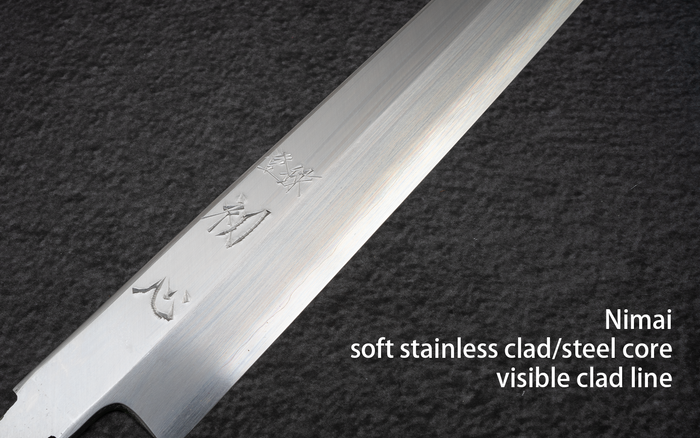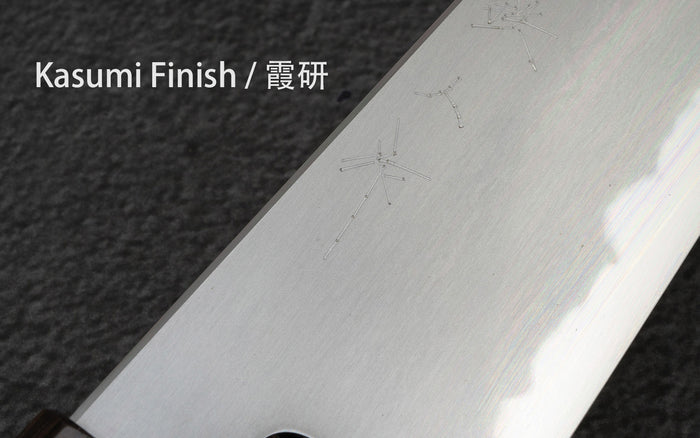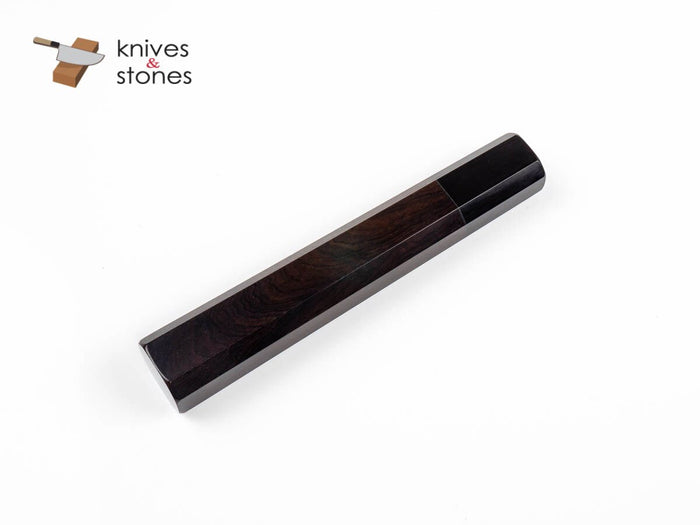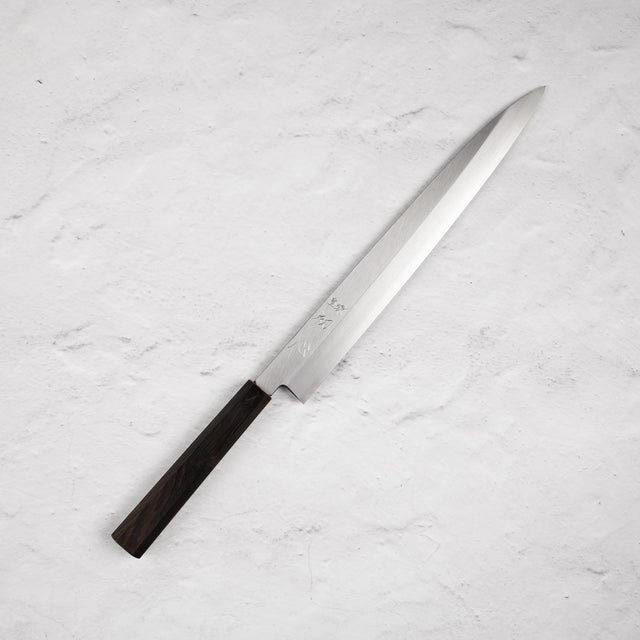Myojin Riki | 庫存單位:
HST-SHIRASAGI-G3-YA300
初心×明神白鷺銀山柳葉 300
售價
$7,135.00
正常價格
$8,394.00
單價
/
不可用
初心×明神白鷺銀山柳葉 300 已缺貨,一旦有貨就會出貨。
無法載入取貨日期
Detailed Specifications
| Line | 初心 白鷺 銀三 霞 |
| Profile | 柳刃刀 |
| Bevel Type | 單斜面 |
| Weight | 226 g | 8.0 oz |
| Edge Length | 290 mm | 11 27/64″ |
| Heel Height | 38 mm | 1 1/2″ |
| Width @ Spine | 3.4 mm | 9/64″ |
| Width @ Mid | 2.9 mm | 7/64″ |
| Width @ 1cm from Tip | 0.8 mm | 1/32″ |
| Steel | 銀三 / 銀紙三號 | 不鏽鋼 |
| Blade Construction | 二枚 - 不鏽鋼夾層 |
| Hardness (HRC) | 60 - 62 |
| Surface Finish | 霞 |
| Handle | 八角黑檀木配黑牛角口環 |
| Region | 土佐 |
| Best for |
|

| Pros | Cons |
|
|
|
Care Instruction
- Don't cut hard things! Japanese knives are brittle so bone hacking is a NO NO!
- Wash with neutral detergent after use, and wipe dry;
- Please don't wash knife with dishwasher, it will damage the wood handle;
- Be careful not to leave the knife close to a heat source for a long time;
- It is a lot more dangerous to cut with a blunt knife than a sharp knife!
- It is best to sharpen a Japanese knife regularly on a waterstone. Error: Steel nature unknown

